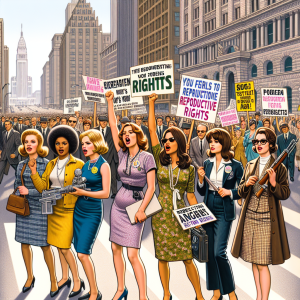#FutureGirls
Exploring the Depths: Navigating Beyond the Surface of Gender Equality
The quest for gender equality has journeyed far beyond its original fight for suffrage, embracing a wider array of concerns. The women’s rights movement, a cornerstone in the fight for equal opportunities for women, now integrates the principle of intersectionality and aims for inclusivity. This evolution strives to represent women from all walks of life, acknowledging the diverse challenges they face based on their race, religion, socioeconomic background, or sexual orientation.
Intersectionality: The Core Concept
Introduced by Kimberlé Crenshaw in the late 1980s, the term intersectionality offers a crucial perspective on how different aspects of a person’s identity can overlap, leading to unique experiences of discrimination and privilege. Crenshaw highlighted the complexity of fighting women’s rights while also battling other oppressive forces like racism, classism, and homophobia, indicating that “If you’re standing in the path of multiple forms of exclusion, you’re likely to get hit by both.”
This approach encourages a broader, more inclusive view of the women’s rights movement, understanding that women’s experiences vary greatly and that some face amplified challenges due to additional layers of discrimination.
The Importance of Inclusion
Inclusion in the women’s rights movement means making sure every woman’s voice is heard and considered in policymaking, activism, and advocacy, recognizing the varied identities among women. It involves concerted efforts to combat inequalities faced by particular groups of women.
Traditional feminism has often been critiqued for centering on the concerns of middle-class, white women, thus neglecting the issues pertinent to women of color, LGBTQ+ women, women with disabilities, and other marginalized communities. Recognizing this, there’s a push to widen the movement to include all women’s experiences.
Overcoming Obstacles for an Inclusive Feminism
Achieving an entirely inclusive feminism is not without its difficulties, ranging from historical biases and systemic oppression to avoiding exclusion within the movement itself. This journey demands continuous self-examination, the openness to listen, and the adaptability to evolve. Echoing Audre Lorde, “I am not free while any woman is unfree, even when her shackles are very different from my own,” emphasizing the interconnected nature of all forms of oppression and the need for solidarity within the movement.
Signs of Inclusivity and Representation
There have been significant strides towards a more inclusive women’s rights movement recently. Events like the Women’s March have aimed to showcase a wide range of voices and concerns, advocating for everything from racial justice to transgender rights. Social media has also played a role in amplifying voices traditionally left out of the mainstream conversation, sharing a variety of experiences and perspectives.
Yet, despite these advancements, there’s still much progress to be made. The continued push for inclusivity and intersectionality necessitates a joint effort and personal commitment to educate oneself and engage with different communities.
A Look Forward
Envisioning a future where gender equality prevails means wholeheartedly embracing intersectionality and inclusivity throughout the movement. It means fostering environments where every woman feels acknowledged and represented. It includes advocating for policies and initiatives that acknowledge the complex realities of women’s lives and address the distinct barriers they encounter.
In our ever-more interconnected world, the women’s rights movement has immense potential to drive change, not just towards gender equality but towards a universal equality that honors every person’s intersectional identities.
“In our pursuit of justice and freedom, our movement’s fabric must be interwoven with strands of diversity and inclusivity, for it’s in the union of our differences that our true strength is found.” – Nada Al-Ahdal @nadalahdal
Wrapping Up
The path to gender equality is layered and complex, demanding a united effort that values the diverse experiences of women. Through the prism of intersectionality and inclusion, the women’s rights movement broadens its objectives to tackle not only gender inequality but all intersecting forms of discrimination. Embracing this wider perspective paves the path to a more equitable and inclusive world. The mission continues, and with each step, we move closer to a society where every woman has the freedom and opportunity to live without constraints or labels. By expanding its reach and deepening its impact, the women’s rights movement is committed to ensuring dignity, rights, and opportunities for every woman, everywhere.
#NadaFoundation
#NadaAlahdal
#Nada_Foundation
#Intersectionality #Inclusion #Expanding #Scope #Womens #Rights #Movement
intersectionality-and-inclusion-the-expanding-scope-of-the-womens-rights-movement





















